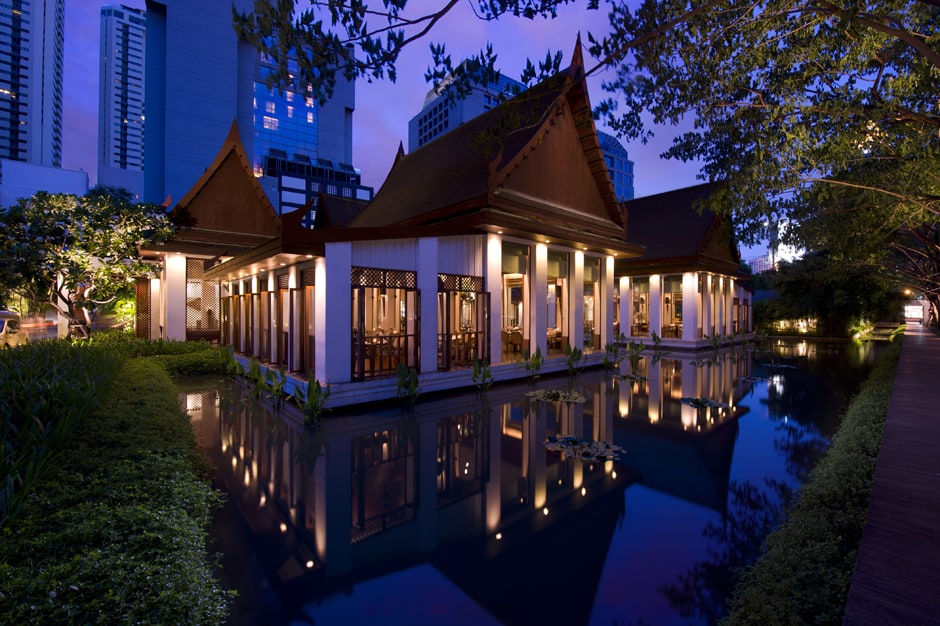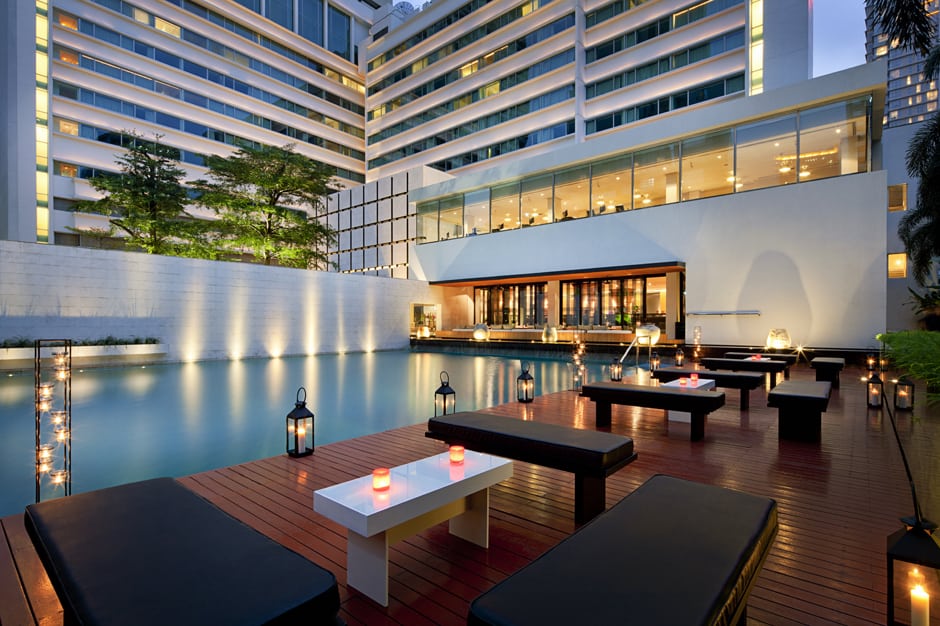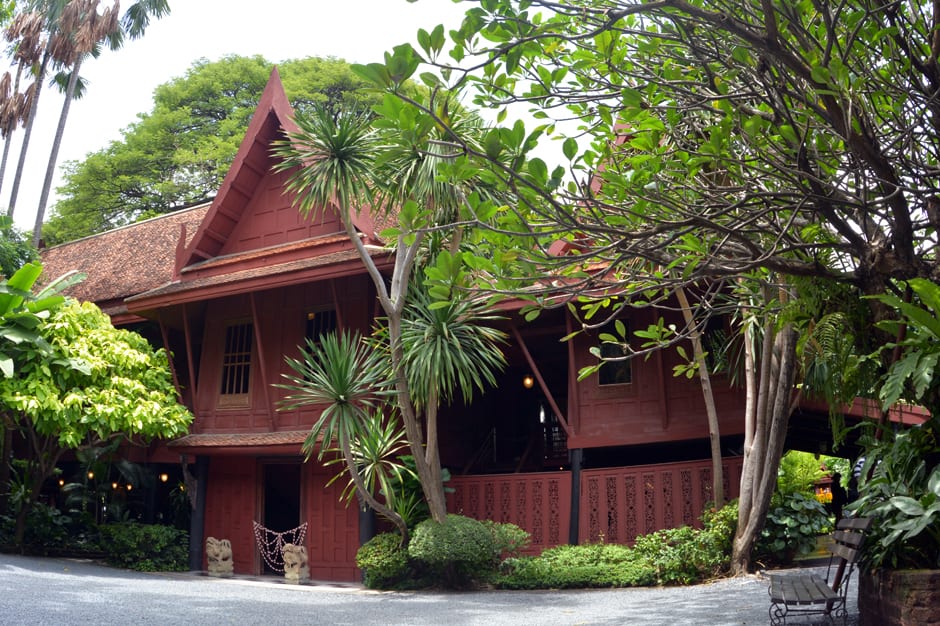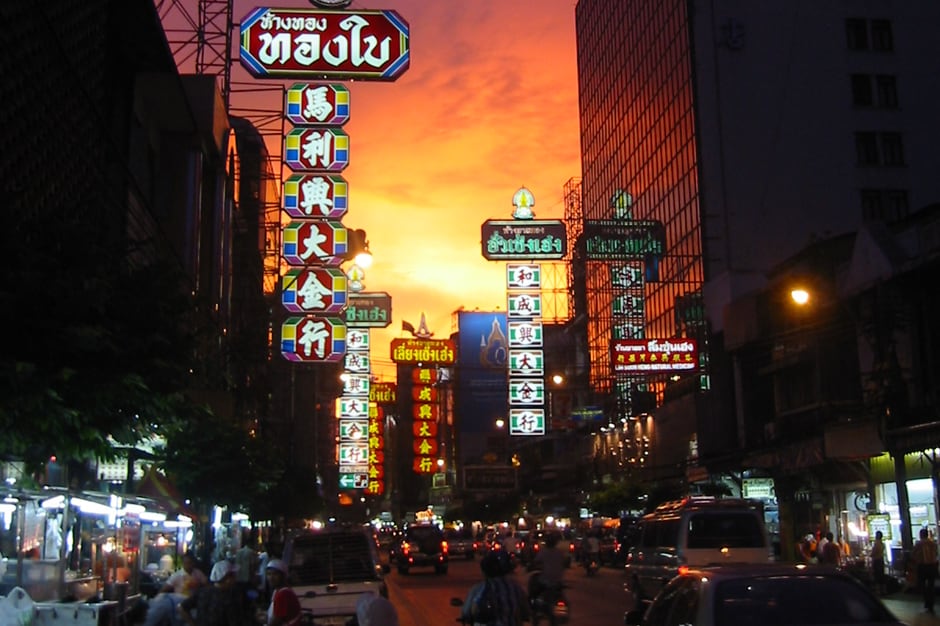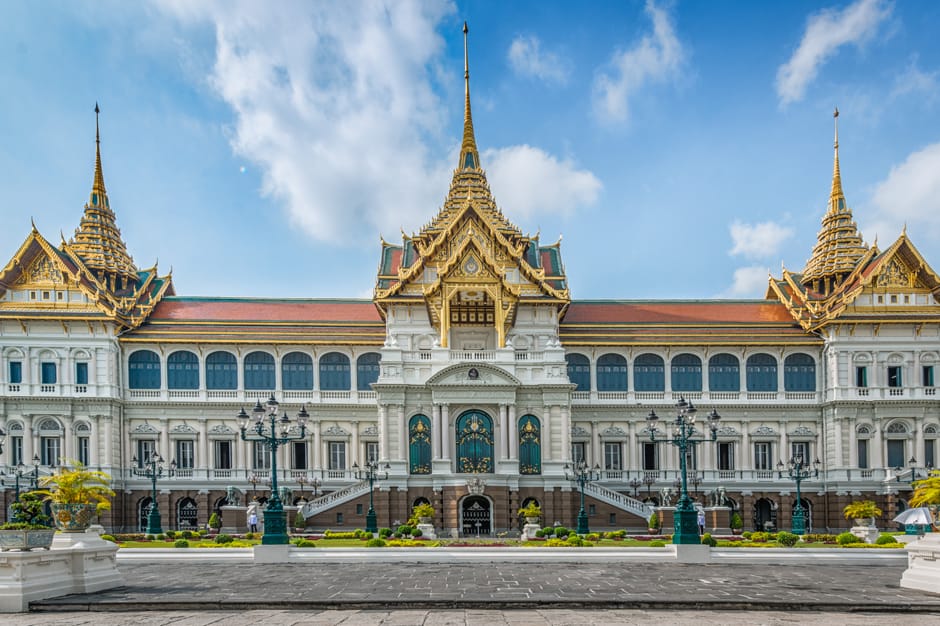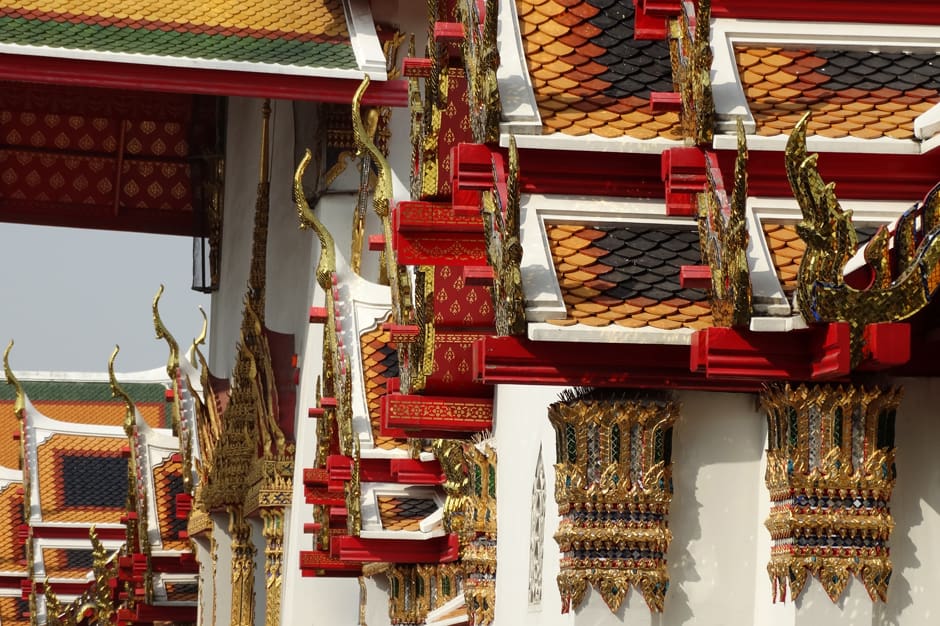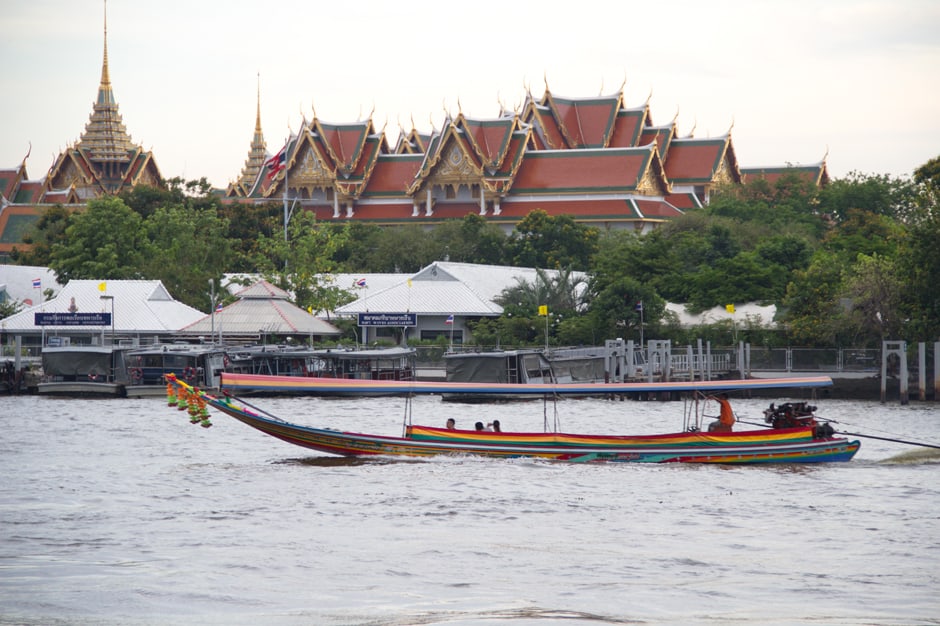Destination Guide
Bangkok

Stay
We only feature hotels that we can vouch for first-hand.
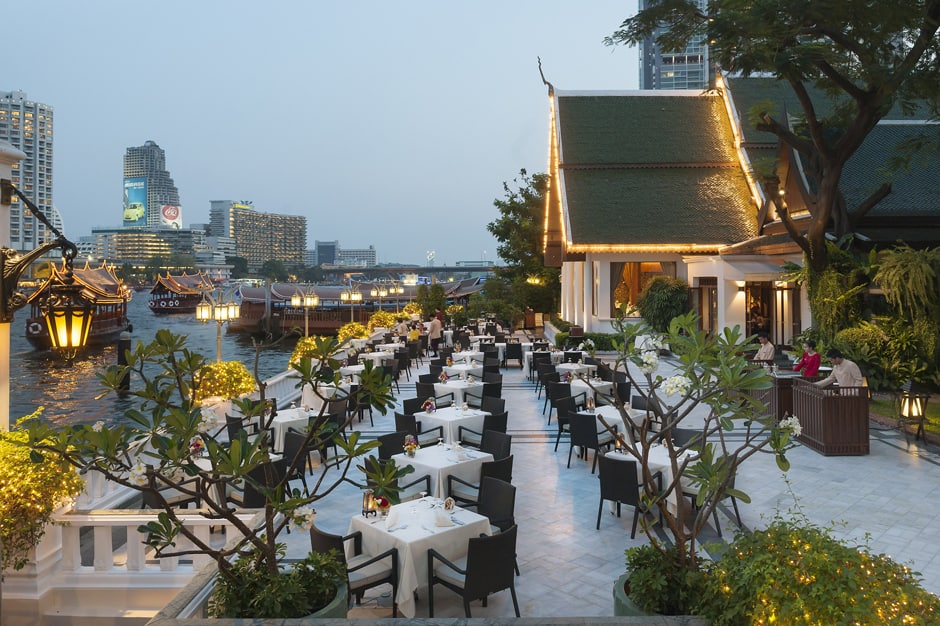
Mandarin Oriental, Bangkok
This legendary property, located right on the Chao Phraya River, opened in 1876 with 14 rooms (used mostly by Western traders passing through Siam) and immediately became famous for its sumptuous interiors. In its more-than-100-year existence, the Mandarin Oriental went through several expansions, and most of the guest rooms are now located in the River Wing, which opened in 1977 (though the original part of the hotel still houses a host of suites as well as the Authors’ Lounge, which was restored in early 2016 and where high tea is served every afternoon).
The soaring lobby, which has oversized golden and teak bells suspended from the ceiling, mirrored walls and a fountain adorned with flowers, is continuously buzzing with activity and has long been a favorite meeting spot for the Thai royal family, moneyed locals, expats and visitors (some critics liken the ambience to that of a train station). More serene are the 368 rooms and suites, all showcasing the signature Mandarin Oriental style: understated elegance. The 24 rooms and suites in the Historic Garden Wing were renovated in 2016 as part of an $18 million restoration project; with stunning white-marble bathrooms and plenty of light flowing in from the floor-to-ceiling windows, they're breathtaking. Some of them have a split-level layout with the bed on a mezzanine, so on waking, you feel as if you were floating above the river. True traditionalist travelers will appreciate rooms in the Authors’ building of the Historic Garden Wing, a two-story colonial structure that overlooks a lush garden and whose four suites are individually designed (the Joseph Conrad one comes with a gorgeous private terrace as well as carved wooden doorways and a silk-paneled study). Those looking to splurge needn’t look further than the new Royal Suite located in the Garden Wing, which boasts impeccable design and privacy. As you’d expect, service is top-notch: friendly, smooth and helpful.
For those traveling with children, the real perk of staying at the Mandarin Oriental is the fabulous pool, which is framed by daybeds and loungers, offers views of the river and provides a serene resort feel in the midst of Bangkok’s chaotic bustle. The hotel’s many restaurants and lounges include the breezy riverside Verandah, the popular Bamboo Bar and the charming Authors’ Lounge. Even if you’re not staying at the hotel, a visit to one of these is a must on any first-time trip. The Author’s Court afternoon high tea makes for a wonderful break from shopping at nearby O.P. Place, Cotton House or River City Verandah. The Mandarin Oriental’s acclaimed spa and cooking school are located across the river. Those looking to shop closer to home will enjoy the hotel’s shopping arcade, which is filled with high-end boutiques offering jewelry, textiles, antiques and more from renowned artisans and brands like Jim Thompson and Lotus Arts de Vivre.
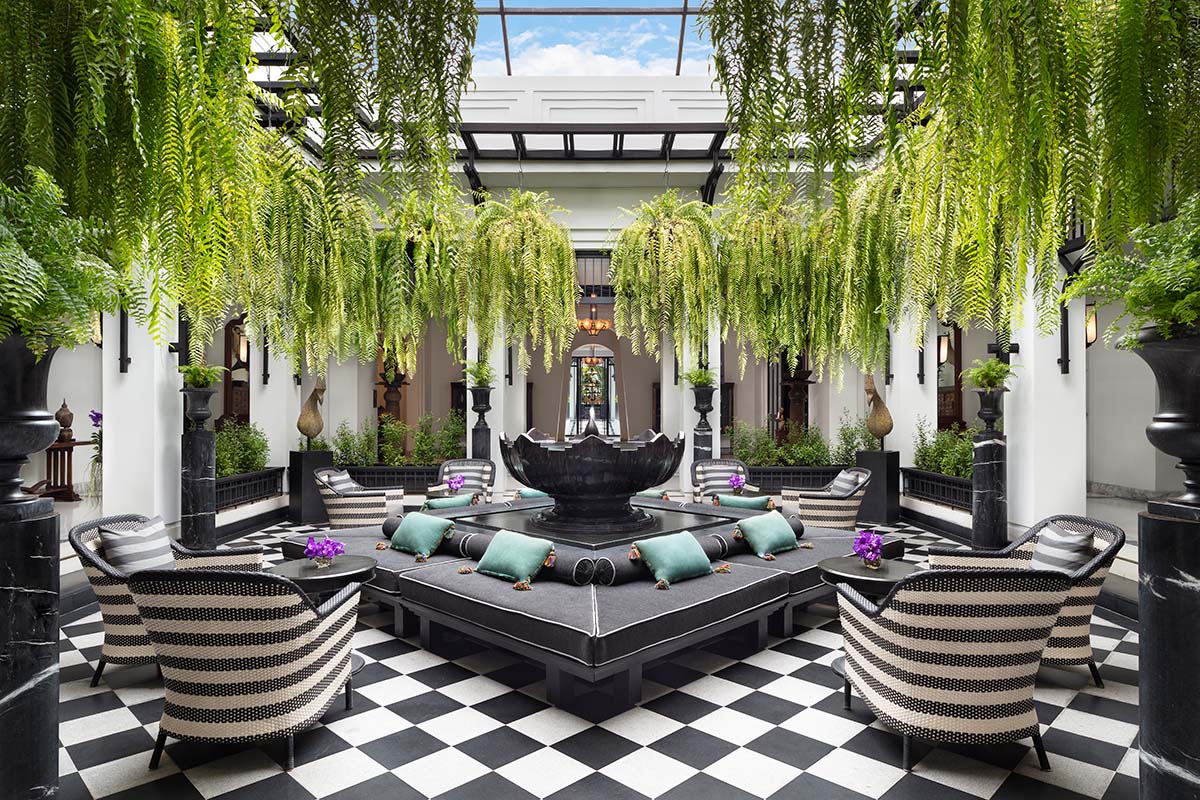
The Siam Bangkok
A beautiful riverfront property tucked away in the oldest part of Bangkok, The Siam hotel offers a charming and intimate oasis.
See & Do

